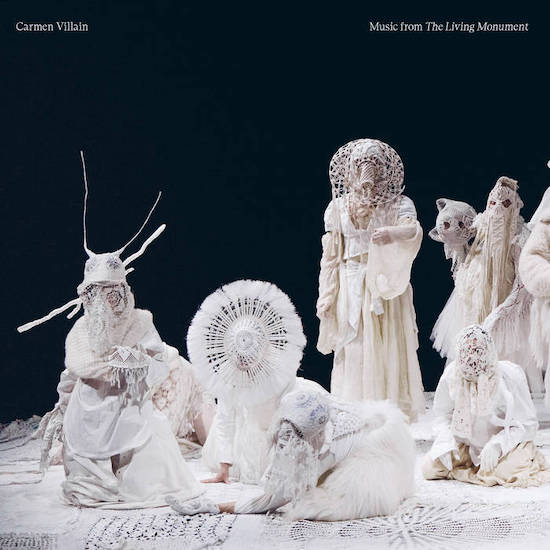Carmen Villain’s spent a decade slowing down. Her full-length debut, 2013’s Sleeper, lurched between goth and shoegaze, both rhythmic and muddy, her voice whirling through the reverb. Infinite Avenue, from 2017, was more stretched out, relaxed, a bit folky, though still propulsive in its way. But by 2019 the Mexican-Norwegian auteur had downshifted gears dramatically. Both Lines Will Be Blue was dreamy, entirely instrumental, and last year Only Love From Now On settled into its experimental, jazzy ambience.
The glacial pace of her latest release only follows suit. But it also makes sense, given the context it was created for. The score for Hungarian choreographer Eszter Salamon’s The Living Monument, a performance by Carte Blanche, the Norwegian National Company of Contemporary Dance, Music From The Living Monument is a soundtrack for statues. Villain has read the brief. Any movement in these five tracks is surprising. The arrangements on ‘Multicolor’ and ‘Violet’ in particular appear to ape tape loops, only leaving to return to the same point, at first degrading like William Basinski’s Disintegration Loops before taking a left turn, and then another after a further series of repetitions.
Carmen Villain has also spent ten years in search of space. Now she has it, she hoards it. Once again, she’s dispensed with vocals – discernible vocals, anyway. Frequently, Music From The Living Monument pulls in fragments of what sound like chants from the monastery next door. The eerie ‘Gold’ opens with a kind of choral white noise, where partsong meets mumbling, then chattering, or perhaps it never changes and the imagination fills the gaps. To begin with, its brother ‘Silver’ is more sparing still, allowing the slightest occasional murmuring in its first six minutes before flowering beautifully, rising, cooing, into the light. There are no words.
All this space and hum would be nothing without Villain’s grasp of melody and its consolations, breaking through the disquiet with the plush crescendos and birdcall panpipes of ‘Multicolor’ or the melted synth notes of ‘Pink’. The unexpected becomes expected, each circular rhythm or phrase building tension for the next twist, the next moment of relief. The trick bears repeating, track after track, spin after spin.
Villain’s spoken previously about the main difference between her former career as a model and her current life as a musician – turn up, look good, get paid versus creating something meant to last – but it’s not always a given. Some artists produce decades of ephemera. This journey into the void’s been worth its rewards though. In its elegant, immovable majesty, Villain’s score is its own living monument.


